Have you experienced challenges in your animal advocacy?
You’re not alone. In this month’s episode, the Vancouver Humane Society’s Amy Morris, Chantelle Archambault, and Emily Pickett discuss challenges commonly experienced in advocacy work. They delve into some of the difficult feelings that come up in advocacy work, the barriers there are to making change for animals, and personal experiences shared by listeners.
Note: This written discussion has been edited for length.

Featured guest: Emily Pickett
Campaign Director, Vancouver Humane Society
Emily joined the VHS team in 2014, after completing her degree in Political Studies from the University of Saskatchewan and a campaign internship with the Humane Society of the United States. She has worked in the non-profit sector ever since and her life-long love for animals has guided her work in the animal protection and conservation movements. As VHS’s Campaign Director, Emily manages the organization’s campaign strategy around issues including farmed animals; animals in captivity; animals in entertainment; and co-existence with wildlife.
- Feeling helpless about cruelty footage
- Difficulty changing legislation
- People don't acknowledge the problem
- Changes are scrapped during an election year
- Truth about animal suffering is hidden from children
- People unwilling to make personal change
- Experiencing backlash to advocacy
- Feeling hopeless about others' indifference
- Challenges gaining visibility for a cause
- Next episode
Feeling helpless about cruelty footage

Chantelle: One thing that we hear from people is that they watch video footage of animal suffering and they feel very disturbed and hopeless.
This is something we’re really cognizant of in our own advocacy work. So we don’t share extremely graphic videos and images and we try to include content warnings on any images that might be upsetting.
But at the same time, some people consider it an important part of advocacy work to bear witness to what animals are going through and to show others the realities of what animals endure at the hands of humans.
So what advice would you both give to people who feel hopeless or upset about footage like that?
Amy: Yeah, it’s certainly a really big and challenging part of our work. I have witnessed animal suffering both in person and through video footage, and I think they have impacted me, each in their own way.
In person, it has its own challenges; the guilt of what should I have done and things like that. But then with the video footage, it is that helplessness of, I can’t do anything about this. Now I just feel really bad.
Visualize the help you would provide
Amy: So one of the ways that I’ve heard guidance from Animal Justice Academy is to think through the situation, put yourself in it, get yourself really calm and then breathe into it. Visualize what’s happening and then make a choice. Do something to help the animals, whatever that is. Talk to the farmers, take the animals away, give food, provide enrichment.
Basically visualize those animals that you witnessed and provide them in your mind what you want to provide them and have that be the peace that you can find with having witnessed that suffering.
Share your feelings with others
Amy: And then the other piece is talking with people about how you’re feeling, because in a way, it’s its own kind of advocacy that’s very personal; if people are open to it.
You have to ask, do you have capacity for me to share about this?
Because some people don’t and you won’t get the response that you want and then you’ll end up more frustrated. But if someone does have the capacity, if you say, I witnessed this, or I worked on a farm and I saw this.
It can be a real experience or something observed online. Share what you saw happen and how it impacted you and what you have done so far and how you’re still affected.
Part of that is you’re advocating for those animals in that moment of sharing, but you’re also being vulnerable. And that’s the best state that you can communicate the reasons that you’re so affected by this footage.
And the person on the other end, especially if they’ve consented, they’ve said, yes, I’m, willing to listen to this, this can motivate change on their end, potentially. Or it can have them reflect or work through something that they find challenging. It might give them some tools to learn about what you’ve already done. So there’s a real community connection and co-regulation that can happen there.
I find that I often have to tell a story five times before it sits a little bit further away from me. It’s not just once. And it’s still with me. You know, the stories are there, but they don’t sting as much as they once did.
Emily: Yeah, I think it’s such a major challengethat advocates deal with. For me, I think a big thing that I’ve learned to do is to really take time for self care. And obviously that looks really different for different people.
Spend time with animals
Emily: For me, I like to take breaks when I’m hitting that point of overwhelm where I can feel it in my body. So I’ll take a break and I’ll go cuddle with my dog or take her for a walk or just go sit out in nature. Try to do the things that kind of just help bring my system back down and make me feel a little more grounded.
One other thing you can do that I’ve found helpful is to volunteer at a farm sanctuary or anywhere that you can spend that in-person time with animals. You’re spending time with animals and seeing them in a better environment.
Amy: That’s so healing.
Channel your feelings into action
Emily: Another thing that I like to do is focus on how I can channel my feelings into action.
So what can you do in response to the footage?
Maybe you could write to a decision maker and share it with them.
Maybe you can share aspects of what the issue is without sharing the footage. If someone else isn’t in a place to be able to watch that footage, in the past the VHS has summarized what happens in some of the videos or we’ve put it in different formats that can make it accessible to people at their different capacity levels and encourage them to take action.
So think about ways that you can kind of break that up into mini actions without overwhelming yourself or overwhelming others.
Those are the kind of the two approaches that I take. What do I need? And then, how can I kind of make this approachable for someone else wherever they’re at?
Share writing about the footage
Chantelle: I completely agree with everything both of you said.
Usually when I’m watching those videos in our work at VHS, it’s because I’m going to be one of the people who’s summarizing the footage for op-eds and writing. I channel my frustration and my anger and my helplessness into those pieces of writing to make that accessible for people so people actually know what’s going on.
And then my self care is definitely talking to people. I think that all the people in my life who I’ve spoken with who have either gone vegan or have seriously reduced the amount of animal products that they’re eating are people who I’ve spoken with kind of to offload those feelings and who gave me the space to talk about what’s happening to animals in that footage.
So I definitely think that’s a really important part of advocacy.
Difficulty changing legislation
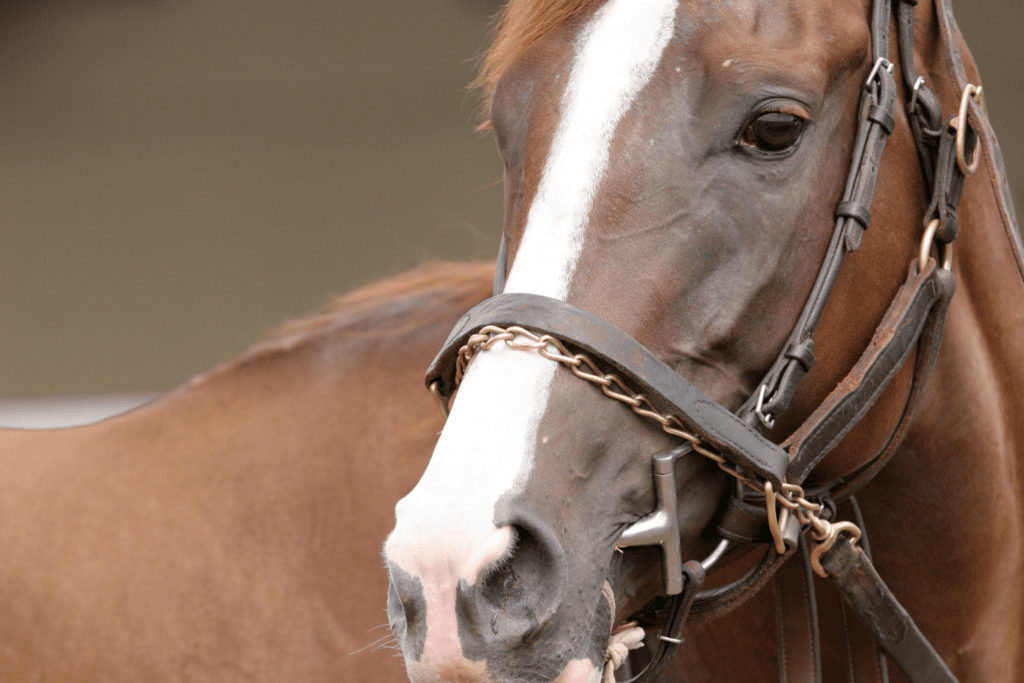
Chantelle: Another challenge that people can run into in advocacy is they learn about the processes that go into changing a law, and they do all this work, and then they find that legislation is almost impossible to change.
Amy: I find this one maybe even worse than the footage for burnout
Because it’s like, okay, footage gets me fired up, but finding out that it’s hard to change something, then I’m like, don’t you understand that there’s so much suffering happening?
So really anyone who’s, who’s experienced this, I get it.
Consider other ways to make change
Amy: I think it’s an opportunity to get creative because the classic thing to do is say, this thing is bad. This thing should be illegal. I’m going to try to make it illegal. I think that’s a normal way to think. That’s the immediate reaction. In a way that’s like the kind of the non-realistic reaction.
It’s just, change this. So then you have to get creative and go back to, okay, what is the change that I want? Not to think what is the solution and say, it’s this solution or nothing. Instead, think, what do you want to stop from happening? And how do you get there without legislative change or with legislative change being the final step?
Speak with people who are harming animals
Amy: So a couple examples would be to talk with people who are harming animals and find out what motivates them.
Has it been in the family a long time? Do they not maybe have an understanding of animal suffering or they don’t see another path forward?
This one’s hard. I wouldn’t say I’m successful at changing people’s attitudes necessarily, but coming to a place of more understanding and coming to a place where they’re more willing to consider changes to their industry is a place that I’ve gotten to.
So maybe it’s not that they give it up altogether, but maybe they have more compassion towards animals and put a policy in place, put more monitoring in place, things like that.
Advocate for public support
Amy: And then the other is, Okay, why isn’t legislative change successful?
The government doesn’t include animals as part of the constitution the same way that humans are included. And so the government has to do what people want, but it doesn’t have any kind of obligation to do what animals want.
So if you want to get people to change their businesses and you want legislative change as a way to do that, then you need to get the majority of the public on your side to understand what animal suffering is.
And that takes so much time. It doesn’t happen overnight. It happens over a long period of time, decades sometimes.
It’s a collaborative process; maybe there’s a television program that gets popular that helps educate people, while another organization is doing advocacy, while another organization is boots on the ground.
Seeing yourself as one part of a bigger advocacy picture and knowing that if you’re as strategic as you can be, you will work towards that change.
Look for opportunities outside of legislation
Emily: Yeah, I think to your point as well, looking at those other routes for creating change. While legislation change might not feel like it’s achievable at a certain moment, there are other strategies that you can kind of look at and levers you can kind of pull that can help move the needle on the issues.
For example, maybe it’s a corporate policy campaign. Sometimes government won’t make change, but if they feel that kind of pressure from, retailers around something like cage free egg campaigns, that can be a way to increase the pressure.
As you’ve mentioned, looking at public awareness campaigns to really kind of build that public pressure and reflect that this is an issue that the public cares about.
Look to different levels of government
Emily: And sometimes you can look at other levels of government. So maybe you’re trying to get something passed federally and you’re just kind of hitting a wall there.
But what about a municipal bylaw or even just looking at municipal purchasing policies and practices? Something that can help set that precedent that is just the foot in the door and help others see that it’s doable and that people are taking that action.
Don’t lose hope
Emily: And the other point I think that’s really important to keep in mind is that legislation change can sometimes seem impossible until it isn’t.
We’ve seen issues kind of hit a tipping point. It seems like you’re doing the same work, your same ask, talking to the same people over and over, and then all of a sudden, things line up.
Like you mentioned, maybe it’s a documentary that tells a great story, and then there’s a campaign associated with that and there’s coalitions of organizations; and everything just kind of lines up just so in a way that hits that tipping point.
We’ve seen that on issues like the grizzly bear hunt in B.C., where all of those things just kind of lined up. People were doing a lot of really hard work behind the scenes for a long time.
So I think it’s always just continuing to look at different ways that you can continue to advocate for change and also looking at that bigger picture. And what are those other levers that you can pull in the meantime?
Public opinion sways decision-makers
Chantelle: Yeah, I think both of you had amazing points. We touched on this last week, but two of the things that motivate government decision-makers are unfortunately not always compassion for animals.
Although there are a lot of decision makers who care deeply about animals, on a large scale, that’s often not what makes it into the legislation; it’s money and public opinion (votes).
So public opinion campaigns are so important because you’re changing public attitudes enough that there’s pressure on the government to make that change, or you’re changing public opinion enough that there’s fewer people supporting the industries that are harming animals, and it becomes unprofitable for those harms to happen.
People don’t acknowledge the problem
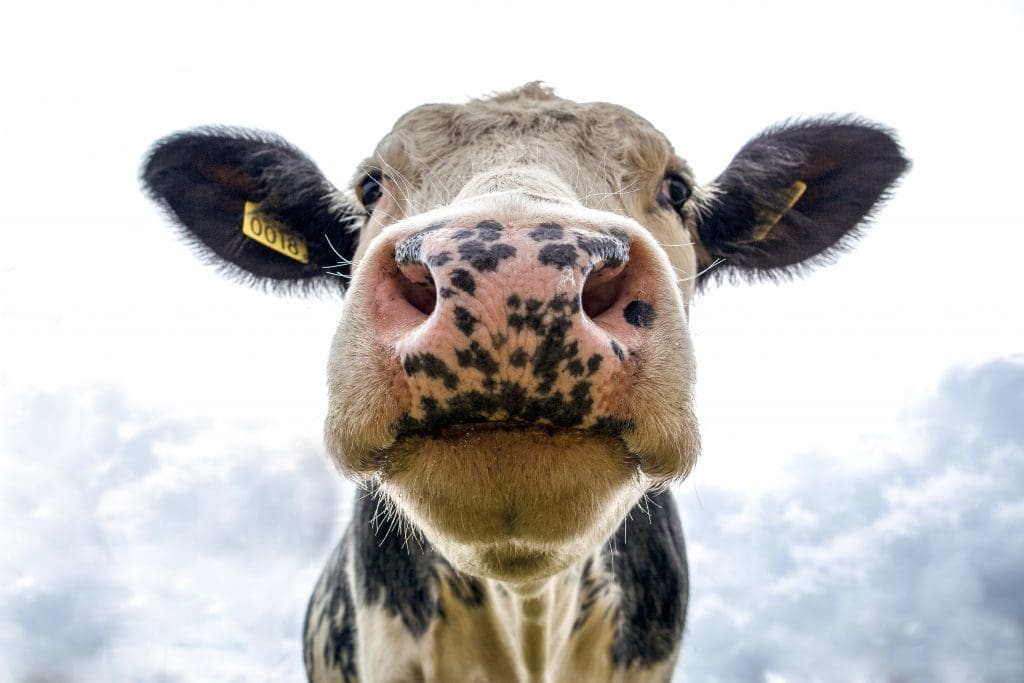
Chantelle: Something else you may run into is that you put time and energy into a change, and you’re just finding that the people you talk to don’t want to acknowledge the degree of suffering that animals go through. So, what would you say to folks running into that barrier?
Change your audience
Amy: Personally, I think you can reach further to find people who do care.
There’s always people who are busy or burnt out or both of those things. Often, it’s not that they don’t care or they don’t want to care. It’s just that they’ve got so much going on that there’s no space for anything beyond it.
You’ll have those people, but if you stay with it until you come across someone who can respond with empathy, then you’re making positive movement.
And you have to kind of know that conversion rates, even for online campaigns, are 1 in 10. That means that only 10% of people who get your email even visit the website. And then 1 out of 10 of those put the energy into signing.
Sometimes it’s better, but if you make your reach bigger and you will have an impact out there at some point.
Follow up with people later
Amy: There are some people who you may have reached out to at one point and they were burnt out or busy. And if you reach out again and say, Hey, do you have time to talk about this? They might be open to it.
Reflect on how you approach people
Amy: That said, that’s only if they have a positive attitude towards you. And so it’s also about recognizing your own impacts of maybe you said something that was harmful or judgemental or just didn’t feel right for that person.
Recognize that we all have different communication styles and sometimes we can be brash and we can be judgemental. And that might be it for that person. They might not have capacity beyond that.
So, a mix of keep trying and self reflect.
Emily: Yeah, I agree. I think it’s a big part of it. I’ll often reflect on what got me to change my mind about any given thing. How did someone engage with me on a topic that allowed me to feel like I was open to changing my mind or my opinion or my actions?
Really considering and reflecting on how you’re sharing the information. Are you coming off as preachy? Are you making the person feel like they’re attacked or they’re defensive? Can you find some common ground with them? What motivates them? And really just meet your audience where they’re at.
It should be a discussion, learning together and growing together around these things, as opposed to trying to convince somebody or trying to convert them or anything like that.
What I really try to do when I’m in situations like this, is I try to focus on sharing the science and the evidence as well that really kind of supports how animals suffer when exploited.
And I think that kind of adding sort of an element of a third party; it’s the science that’s showing this, it’s not me telling you that what you’re doing is wrong. Or that what I know is wrong is fact and what you know is fiction. But really trying to bring in the science and the evidence that just supports that and can help people come to that conclusion as well.
Changes are scrapped during an election year
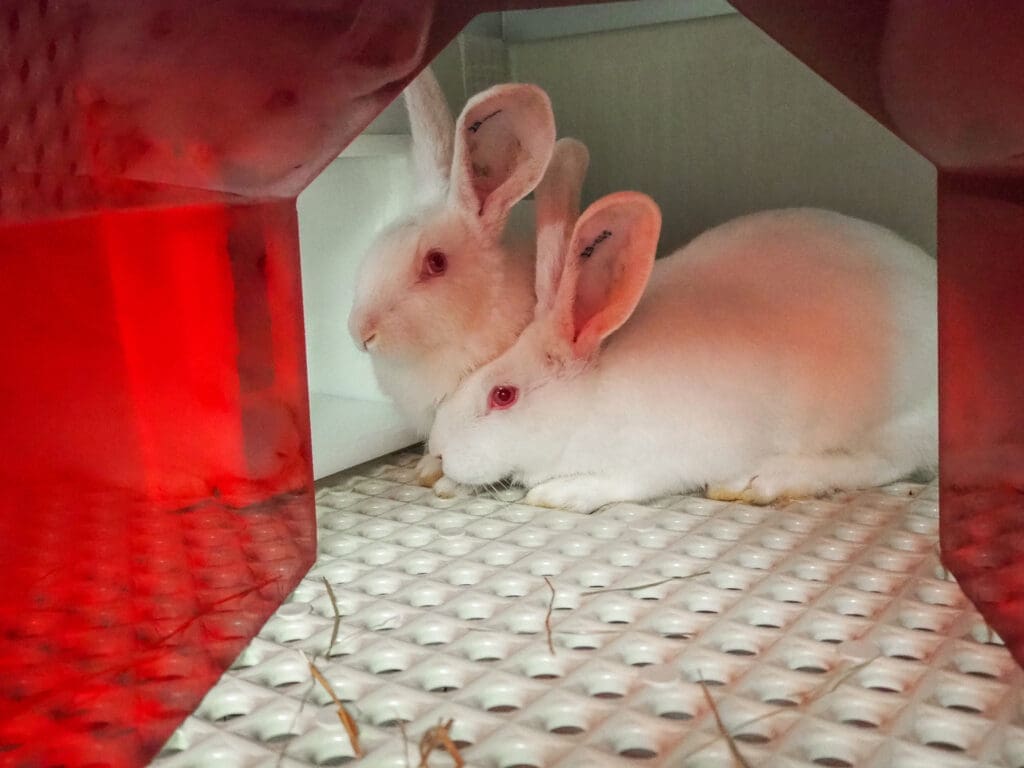
Chantelle: Yeah, absolutely. So this next one is something that I’ve seen happen with an act about cosmetic testing. Something else that can happen is you can be working on a project for many years and that project basically gets tanked last minute because it’s an election year.
Use your progress and consider new angles
Amy: Yeah, this is a huge bummer.
The good news is you have this work material that you’ve put together. It’s not going anywhere. It still has value.
You have to wait for government to reorganize themselves, but that gives you a chance to consider new angles and regroup.
There’s a reason legislation doesn’t make it.
Sometimes it’s just timing, but sometimes there’s other aspects. So what got things stuck? What is something that you were willing to accept, but you didn’t feel good about? How can you talk to the right people about that to get a shift in place so that when you go back and government’s back in place, you have a better ask than before? And it’s more palatable to the people that it’s going to have an impact on?
Chantelle: That’s a great point. And that’s, exactly what happened with the cosmetic testing law. In 2019, we had an election year and the Cruelty Free Cosmetics Act was scrapped, but that groundwork had already been done. So that change was reintroduced as part of a larger bill, Bill C-47, and Canada finally did ban cosmetic testing on animals effective this past December.
So just keep trying, and you will get there eventually.
Make it an election issue
Emily: I think another thing as well is if you have the time and capacity is, how can you make it an election issue for the parties?
This is something I think that we’ve learned as an organization and have worked around, how can you kind of get those things on parties’ radar beforehand.
And then of course, revisit it with the new government and work with them to keep that on that radar. Did they make a campaign promise around an animal protection issue?
And now you want to circle back and say, Hey, now that you’re elected, we would love to work with you on this. You’re just reiterating, they made this commitment.
In the past, VHS has done election surveys of different candidates asking them for their position on different issues.
So that’s a way you can kind of roll it into the election as well. And just think about how can you really establish that issue or that project to make it a top priority for the new government.
Chantelle: That’s a great point. There are so many challenges and opportunities around election years. And I think it’s great to look at the opportunities as well.
Truth about animal suffering is hidden from children
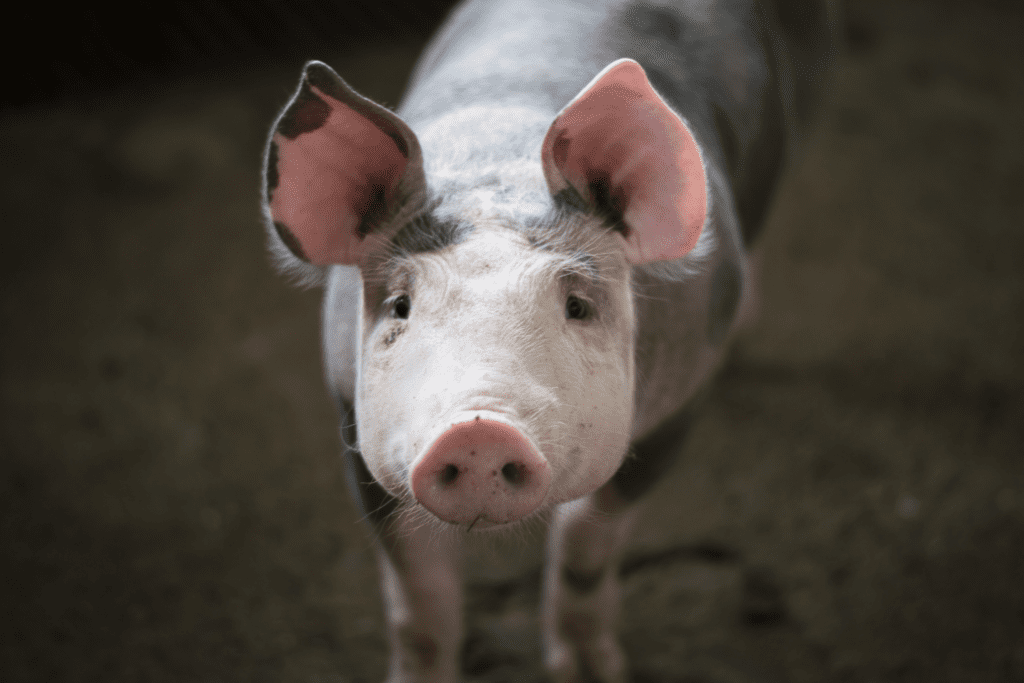
Chantelle: For these last questions, we asked people on social media what their challenges were in their advocacy work. So we have some submissions from our listeners.
One person said, a challenge is people not wanting to hear or learn about the facts when it comes to the violence, suffering, and cruelty inherent within animal agriculture. Why aren’t children taught these basic facts and the truth in school? Had I known any of these basic things about animals used in agriculture, I would have been vegan as a child.
Resources for peer learning
Amy: This one’s really challenging. One of the things that we’re working on at VHS is programs for schools, a toolkit for student clubs, so that kids who are vegan, who are interested in plant-based eating, can share about it with their peers.
Because often, the biggest impact that kids have is on each other. Kids aren’t super motivated by adults. They want to do what their peers do.
Working with schools and teachers
Amy: I think part of it as well is the entire institution of schools is essentially built around relationships with the animal agriculture industry, around how food is distributed.
And so some of those changes have to involve working with school cafeterias. That is hard because it’s individual. It’s not like there’s “the school system in Canada”, one big entity. It’s broken down school by school in many cases.
How do you change a system that, even in B.C., their only thing standard to the curriculum now is rightly so focused on kind of Indigenous learning and information about the history of the land that we’re on, and for everything else there’s guidelines to follow, but it’s not very specific.
And so teachers are given a lot of leeway to decide what they want to teach. And people talk about what matters to them. Teachers who are vegan are going to talk about being vegan. And teachers who care about the environment are going to talk about that. And teachers who care about antique cars are going to talk about that.
So in terms of challenges here, I think the biggest thing is when you come across people who do have an influence over children, have meaningful conversations with them about the power that they have in their classroom. And feel free also to refer them to our materials at VHS.
Resources for families
Chantelle: And even further than being broken down school by school, I think it’s broken down family by family as well.
I would say that compassion is something that’s inherent in most children. If a child sees that an animal is suffering and that the way that they’re eating causes animals to suffer, a lot of kids will inherently want to stop that suffering.
So giving families the resources that if their child is interested in eating more plant-based foods, that they can support that, is really important. We have a recent post on PlantUniversity.ca that talks about resources for plant-based families and how to help your kids enjoy more plant-based foods.
Chantelle: That was something that I definitely ran into as a kid. I think I was nine the first time I talked about wanting to go vegetarian and my family in my home life just didn’t have the resources to know what to do with that, so I didn’t have that option.
But there’s a lot of resources available now and a lot more options in grocery stores.
Making those resources available to families is going to be really important to helping kids be supported in the choices that they’re making.
Find opportunities to share the message
Emily: Yeah, I think there’s a lot of opportunity to work with teachers, with students, with schools to raise awareness around these issues. And it’s not necessarily that it has to be ingrained in curriculum.
There’s just so many opportunities to work within that system.
The VHS has been invited to do presentations to social justice classes. A lot of schools have clubs. Maybe it’s an animal focused club, maybe it’s a green team or an environmental club. There’s a lot going on in school communities that you can kind of tap into and build on.
And I think what’s really exciting is that young people are increasingly aware and active when it comes to social justice issues. So finding those opportunities to connect and really build the awareness around animal protection is really important. And I think there’s so much opportunity out there to support teachers, giving some resources to them to help work on some of these topics or raise them in their classrooms.
So it’s a big one.
Chantelle: Yeah, absolutely. Thank you for writing in with that question.
People unwilling to make personal change

Chantelle: Our next comment was a person who talked about being frustrated with people calling for institutional change without being willing to make personal changes, particularly for farmed animals.
Lead by example
Amy: This one stumped me for a minute because it is a fair thing to be frustrated with.
Like, we want to see people live up to their values. We want people to put their actions where their thoughts and beliefs are.
But at the same time, we are humans, we’re not perfect, and we’re all at some place in learning. So as much as this is sort of a frustrating thing, I think the way I’ve dealt with this is making change within myself rather than asking other people to change.
And so a big part of it is recognizing that people will have some reason and justification for why they think things should be the way they are.
If I disagree with them, the question is, number one, what’s happening here? Is it my ego? Is it because I think my ethics are better than them? Or is it because there’s a gap in information?
A small change is better than no change
Amy: And if it’s just that a person isn’t at the place where they can be comfortable with the personal changes, if they’re doing any work towards institutional change; even if it means cows get a brush that they can brush their bodies against and before they didn’t, it’s still something for the cows.
Their lives are still really horrible. I’m not going to say they’re not, but they’re slightly less horrible.
And if someone wants to put a lot of energy into that and that happens, versus nothing happens, then the cows are somewhat better off.
So trying to think of it that way as keep chatting with people, keep living your values, and know that at least they’re talking about it, at least they have some kind of care, and they may be where you are in five years.
They’re just not there yet.
Chantelle: I don’t know anyone who has always been vegan. Everyone I know who is vegan has once been a future vegan, and I think it’s really important to remember that doing something is always going to be better than doing nothing.
And that comes to personal choices too.
If you can make a small change, that’s better than making no change at all. If everyone made a small change, it would make such a big difference.
Emily: I agree. I think it’s really about progress over perfection. You know, things can take time. People can find one avenue, one way into the world of animal advocacy and then continue to move along in their journey and to align their actions with their values.
Recognize the journey
Emily: And I think it’s a big thing to just lead by positive example. For my own journey, I started off as advocating for institutional change before really feeling like I was taking the personal action.
I was calling for changes around how animals are raised and calling for institutional change, but I wasn’t changing my own behavior very much, but the more that I did that, the more that I felt there was more I could keep doing and I needed to move along that spectrum.
That’s what I wanted to do. And I felt like if I’m advocating for this, I’m at a point now I can start making my own individual changes too.
But if someone had come to me and told me I wasn’t doing enough, that would have been pretty disheartening. And maybe I would have just thrown my hands up and said, I’m not doing anything then.
So I do think it’s about meeting people where they’re at, doing what you can. For the most part, people will start to embody those values and think, okay, what else can I do, and what other actions can I take to help animals?
I think everybody doing a little bit is better than only a few people doing things perfectly.
Experiencing backlash to advocacy
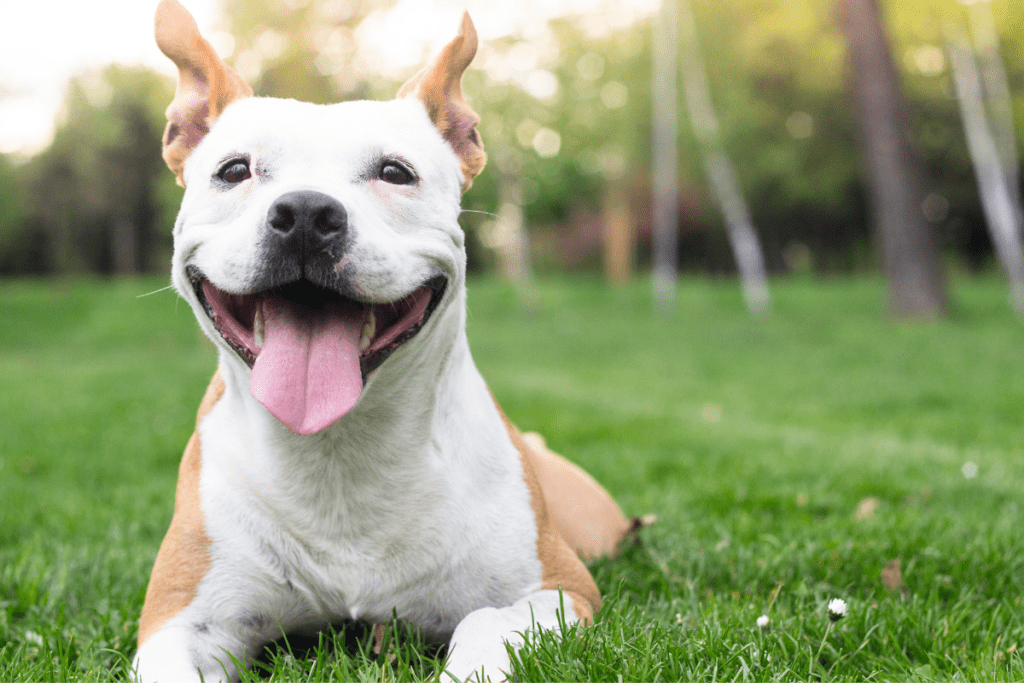
Chantelle: This next person spoke about backlash in advocacy; people reacting poorly to their advocacy work about companion animals like welfare in dog training or unethical breeding practices.
Would you have any advice around that?
Calling in vs. calling out
Amy: This one has broken me down to my core. This one has burned me out really hard. So, I definitely identify with it.
I had a dog breeder say to me that tails could be docked because the dog needed to swim, and if it swam, its tail would get stuck in the reeds in the water. That was being told to me as if it was really sound science.
And so we do have people who are completely convicted in how they think things should be. And, like, The reasons that have been told to them and the things they’ve witnessed and the stories they’ve heard.
And absolutely there’s going to be people who you won’t be able to change their minds. And that’s where sort of like legislative change standards, one on one conversations are all going to play a role.
I listened to this. radio program once about calling in and calling out. When things are not ethical and you witness something, the first thing that would be good to do is to call in, try to connect, have a really meaningful conversation, do your best.
But sometimes calling out has a role. I have called out before. I have witnessed people hit their dogs. I’ve witnessed people shock their dogs and I got angry and I just would say something like, did you just do what I think you just did?
In person, I think this can have an effect sometimes, or you can just make the person really angry. But when people have called me out, I think at first I’m defensive, but then later I’m like, Oh, maybe they had a point about that. Maybe that wasn’t the best thing to do or the most ethical.
So there’s this sort of fine balance between shaming and people, which can just have a negative outcome, and holding people accountable for their actions.
And it is trickier online, I would say, because people just hide behind their screens.
Cite the science
Amy: And so I think the biggest thing you can do is turn towards science at that point. Any time you’re doing any kind of communication online, find the really good sound science and share it far and wide. Get it out there: Hey, there’s science around this; we don’t need to be sharing opinions back and forth.
There is change. I mean, talk about dog training, Cesar Millan did a lot of damage. And we’re just trying to recover from that damage. Every time I hear someone make that sound that he would make in his training show, I’m like, are you kidding me? That sound is still being used?
But at the same time, I’m seeing a lot more dogs wearing harnesses instead of collars. I’m seeing a lot of middle aged men carrying treats in their pockets or in little treat bags. So I do think we are seeing a shift. It’s gradual though.
Emily: I think I fully agree with your comment there, Amy, about centering the science.
This is an area where there’s so many competing and polarizing opinions, but there’s a lot of science out there that we can point to.
And I think the other thing I really try to do in this area is I centre the animal’s experience, rather than, I think training needs to be done this way.
It’s what are the animals experiencing in any of these situations and really making them the focus rather than the particular opinions or stances or training styles. And I think centering the animals and centering the science is a more impactful way of addressing this issue, but it’s also a really big one.
Receptive people are listening
Chantelle: I totally agree. I think that backlash to advocacy comes in a lot of different flavors.
There’s whataboutism, where people basically say if you can’t solve everything, Why bother with anything? You know, you’re trying to advocate for one thing, and they’re saying, what about these other problems?
If you try to address every problem at the same time, you’re not going to be able to address any problem. You need to address the problems that are achievable and make the progress that you can make.
Back to the progress, not perfection, there’s people who say, if you can’t do everything, why bother with anything? Why are you vegan? You might step on an ant going to the mailbox.
I think it’s important to remember that there’s a lot of people, especially on the internet, who will basically use any argument they can against making a change.
And those people are pretty set in their views. But there’s also a lot of people who aren’t commenting because they don’t feel strongly. And those are the people who are seeing all these other comments, and they’re going to be persuaded by the side that’s more reasonable, that’s leaning on compassion, that’s leaning on evidence, and those are the minds that are going to be changed.
Feeling hopeless about others’ indifference
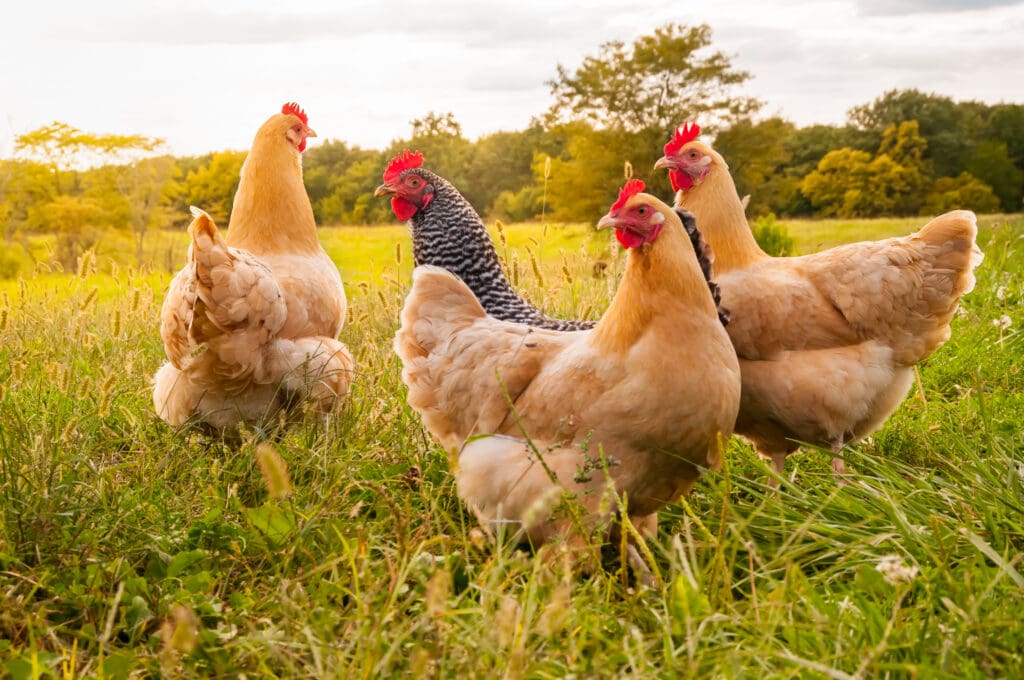
Chantelle: This next person talked about feeling hopeless that friends and family and people in the wider community just don’t care about the suffering of animals.
Find your niche
Amy: This is one that I think about a lot. There are things that I don’t care about. Certainly I care lots about the suffering of animals, but I think about maybe sometimes I don’t do a great job recycling, or maybe sometimes I don’t do a great job with lowering my consumption of fossil fuels.
Everyone has a cause that matters the most to them, whatever that cause is. I am doing something that someone is going to go, Oh my gosh, like, can you believe that?
We all know animal suffering matters because animals are sentient and it’s harmful, but harvesting oil from the earth is disturbing a lot of wildlife areas. Harvesting materials for batteries is also destroying a lot of wildlife.
Pretty much any kind of consumerism we do is having a really big impact. And yet we all partake in that in some way.
And so recognizing that we are in a place of learning, a place of doing our best.
The most you can do is to really just have meaningful conversations and give yourself that self care when you get frustrated that other people don’t care.
Chantelle: Yeah. I think it’s important to remember that none of us have infinite capacity to advocate for everything. We can care about lots of things and not have the capacity to learn all about a topic and to advocate for it and to make direct changes in every area.
I’m really grateful that there are other people out there who are making those things their area of expertise. We can also make change in our area of expertise.
So it’s just finding your niche and finding the things that you’re really passionate about, and then kind of relying on other people to help make changes in other areas as well.
Others are on their learning journey
Emily: Also just continuing to lead by example in those areas where you’ve got friends and family and other people in the community who may not appear like they care.
But you may find you’re surprised by the people who are actually listening and learning in the background. Maybe they’re not responding right away. Maybe they’re processing things and going on their own learning journey around it.
I can think of times when I felt really low and hopeless, like this just doesn’t seem to be making a difference or no one seems to be listening or changing.
And I’ve had people reach out, often people I would not think would ever be paying attention, and thank me for sharing a certain article or a story or a campaign.
You just don’t know the impact that you can have. So I think just continuing to lead by example and kind of be that change that you wish to see is more powerful and more impactful than you can sometimes imagine.
Introduce easy entry points
Emily: And sometimes if you’re sharing with this community and you want to help people create change, how can you kind of create those different entry points based on where people are at?
Maybe it’s Meatless Monday. That’s someone’s foot in the door to start thinking about meat reduction. Maybe they’ve never considered that in their life. Does it make sense to ask them to go vegan overnight? Or does it make sense to ask them to consider meat reduction even one day a week?
And next thing you know, they’ve got some more meatless options in their recipe book. And now they’re having a couple of times a week. And then every dinner.
So I think it’s just kind of creating those entry points and those ways for people to take small actions, or a whole range of different actions. So people wherever they’re at can kind of find that entry point.
Change in opinion is gradual
Chantelle: For sure. And the more times people hear a message that’s told with understanding and compassion, the more they’re going to be receptive to those messages.
No one’s going to make a change on the first time that they’re hearing something. Maybe the conversation you are having is the first time they’re being introduced to this, but maybe on the 10th time they hear about it, they have learned about it and they care a lot more. And maybe they’ll be more open to making a change then.
It’s all going to be a process, but that’s why it’s so important to be practicing self care and making sure that you find those ways to ground yourself and to process your feelings of frustration and hopelessness so that they don’t turn into burnout. Because we need you. We need advocates in the community.
Challenges gaining visibility for a cause
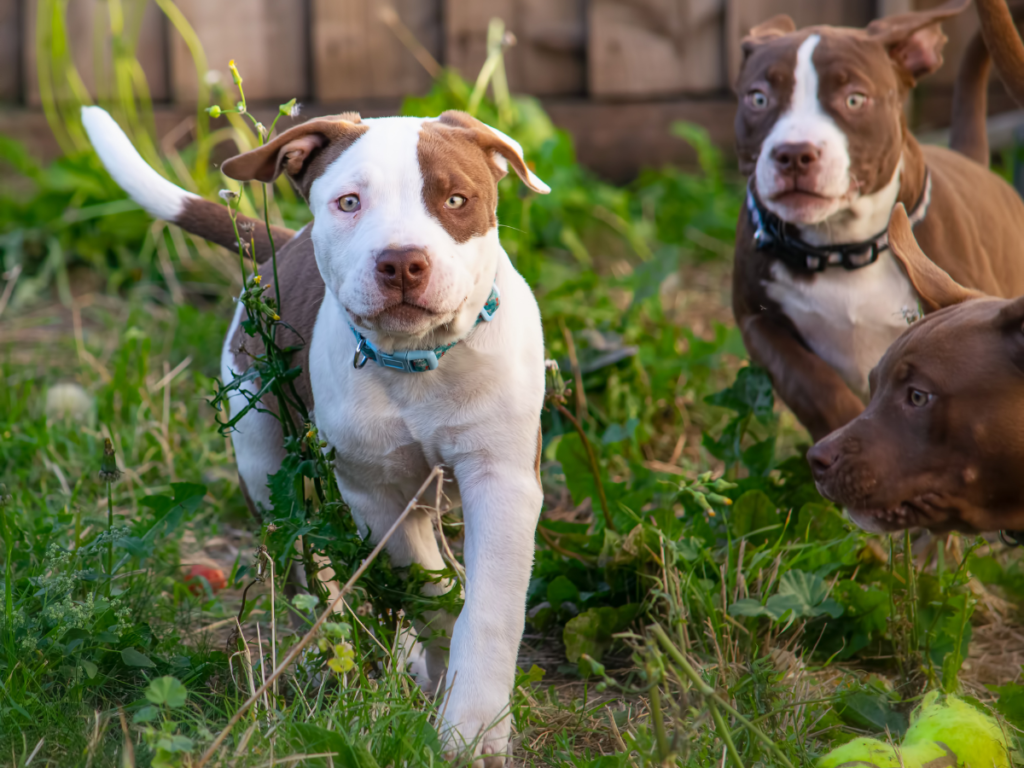
Chantelle: This last person talked about difficulties gaining visibility and traction for their cause. And that’s a person who worked on the They Took My Dog documentary and a petition on Change.org to reform B.C. dog laws.
Changes take time
Amy: Yeah, there are so many causes and needs. I could sit here and list a hundred different laws that need to be changed.
So I understand that some take off, some don’t. When you have one cause that you care a lot about, you have to really dedicate yourself to it.
We spoke to Barbara Lapointe, who essentially has been working on the same thing for more than a decade. And has made some changes, but not the specific change that they’re asking for.
I think what’s challenging is, in this case specifically, some of the laws that need to be changed are municipal. There can be provincial change, but for the most part, these laws are municipal.
There’s 160 or something different municipalities in B.C. So, it’s going to take time.
Certainly, I think the more there’s legal cases where the lawyers make it clear to the courts what the challenges are, and then those courts communicate that to the municipality and the costs associated with those cases, I think that’s where you’re going to see a lot of change. The more things cost society, the more change could happen, and I think that’s the case when it comes to laws around dangerous dogs.
Reassess your efforts
Emily: Yeah, I think generally just the question of how do you gain visibility and traction for a cause is sometimes stepping back and reassessing. Because things change as well, right?
Who is your audience? Who’s adjacent to your key target audience? And how can they help amplify the issue to a new audience?
That could be someone who has a platform that there’s some alignment. It could be looking at how to translate into different languages and to reach different communities.
Also looking at different ways to raise awareness. Can you engage offline? Say it’s writing an op-ed or taking out a billboard or engaging with people in person.
And I think also having the discussion with as many people as possible, asking for their feedback, for their thoughts, what do they think can help create change?
People like to be a part of the solution. So looking at ways that you can bring them into the fold and get their perspective. Maybe they have a connection somewhere that you hadn’t thought of, or maybe they have some input that would help bring that campaign or cause to another level.
Just diversifying things as much as possible.
Chantelle: Yeah, that’s a great point. We talked last week about partnerships are so important and how you never know where you’re going to find support. You can find allies in the most unexpected of places. So the more people you talk to about this, the more you might find other people to help amplify your cause.
Next episode
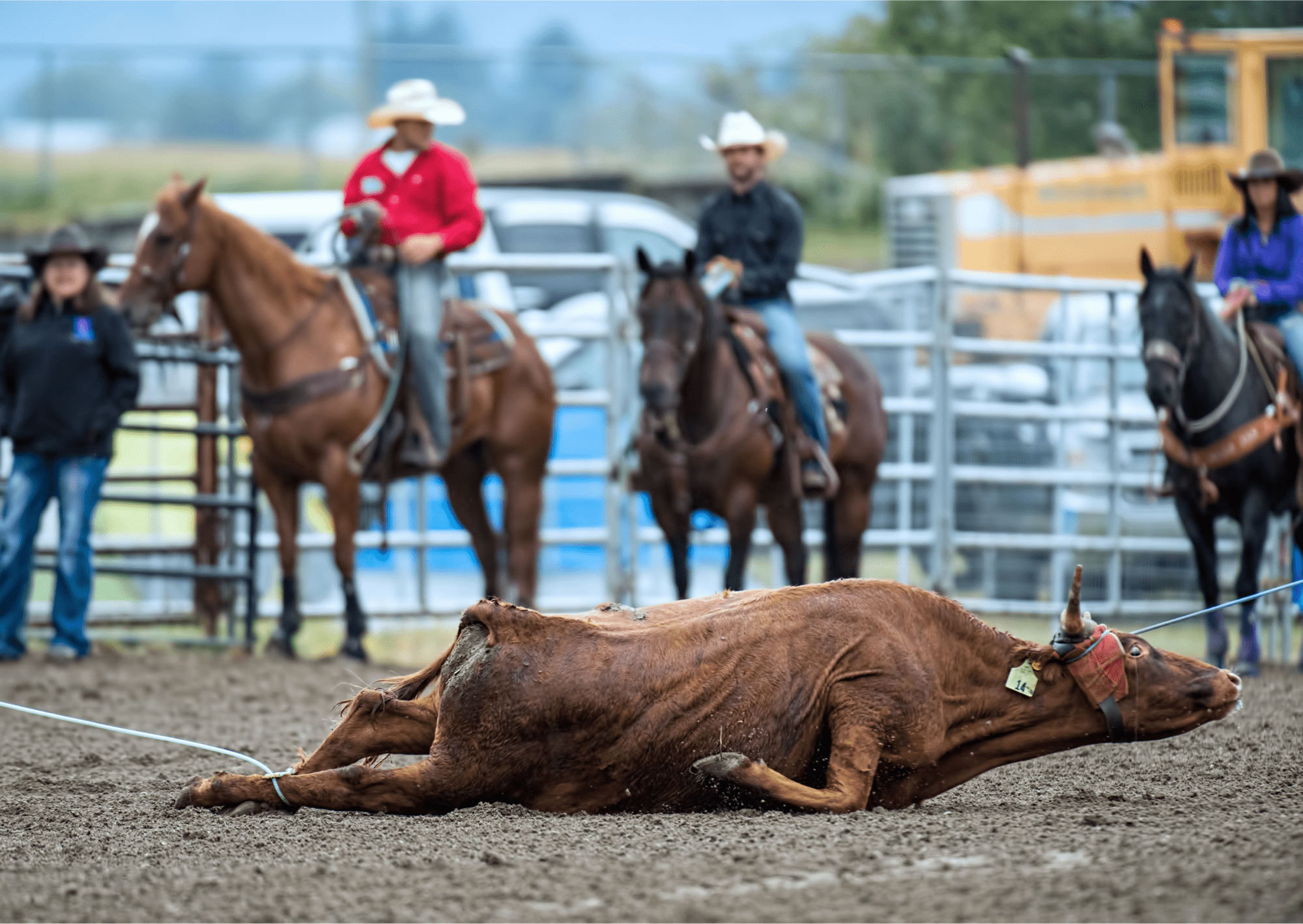
Please join us next month as we discuss the most common arguments in support of rodeo and ways to respond as an animal ally.
